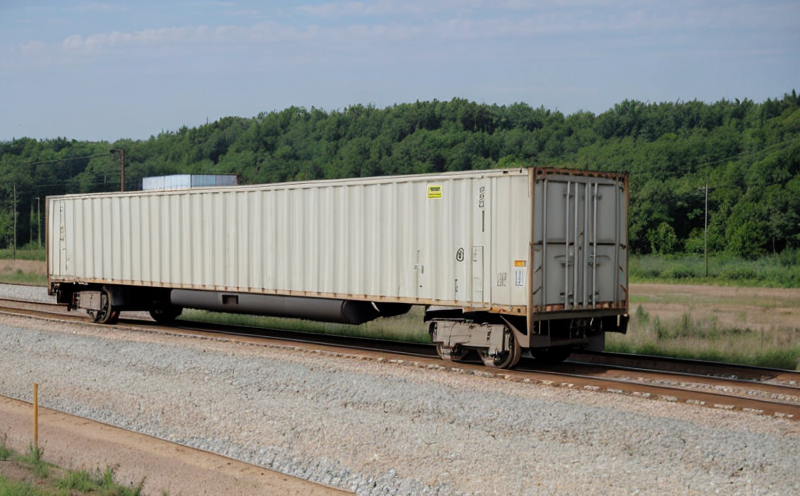UIC 577 Fatigue Life Testing of Freight Wagon Structures
The UIC (Union Internationale des Chemins de Fer) 577 standard is a critical document that sets the framework for ensuring the reliability and durability of freight wagon structures. This testing protocol specifically aims to evaluate how structural components of freight wagons withstand repeated loading cycles, which are common in real-world railway operations. Repeated stress can lead to fatigue failure, making this type of testing essential for enhancing safety standards and extending service life.
Understanding the nuances of UIC 577 requires a detailed examination of its application. The standard focuses on structural elements that undergo cyclic loading, such as bogies, couplers, and body frames. Testing these components under controlled conditions simulates the dynamic forces they experience during transportation. This approach helps in identifying potential weaknesses before they manifest into failures in operational settings.
The testing process involves several stages to ensure comprehensive evaluation of the materials and designs used in freight wagon construction. Initially, specimens are meticulously prepared according to UIC guidelines, ensuring that all critical areas are represented accurately. Instrumentation plays a crucial role here, with high-precision equipment measuring displacement, stress, strain, and force during each loading cycle.
Once the test begins, it simulates real-world conditions by subjecting the specimen to numerous cycles of loading and unloading. The number of cycles is determined based on expected operational lifetimes, ensuring that the testing reflects practical usage scenarios. Throughout this process, data collection is continuous, providing insights into material behavior under fatigue.
The results from UIC 577 fatigue life testing are used to assess compliance with international standards and industry best practices. This information helps manufacturers refine their designs, improving both safety and efficiency. For quality managers and R&D engineers, this service offers invaluable data that can guide design improvements and material selection.
Compliance officers benefit greatly from such rigorous testing as it provides a clear pathway to meeting regulatory requirements without compromising on quality. The detailed reports generated by this process serve as robust evidence of adherence to international standards like UIC 577, ensuring legal compliance and enhancing reputation among stakeholders.
Why It Matters
The importance of UIC 577 fatigue life testing cannot be overstated in the context of railway safety. Frequent transportation over a variety of terrains exposes freight wagons to extreme stress conditions, leading to potential structural failures if not adequately tested and designed. By adhering to this standard, manufacturers can significantly reduce the risk of accidents caused by structural integrity issues.
From an operational perspective, ensuring that all components meet UIC 577 requirements translates directly into lower maintenance costs and extended service life for freight wagons. This extends not only to individual vehicles but also contributes positively to overall fleet management strategies. In addition, compliance with such stringent standards boosts confidence among users regarding the reliability of products, thereby enhancing brand reputation.
The broader implications extend beyond mere safety measures; they encompass environmental sustainability efforts as well. By promoting longevity and efficiency in freight wagon design, resources are conserved through reduced waste generation during production processes. Additionally, longer-lasting components mean fewer replacements needed over time, which translates into lower carbon footprints associated with manufacturing activities.
Applied Standards
| Standard | Description |
|---|---|
| UIC 577 | This standard specifies the method for determining the fatigue life of structural components used in freight wagons. |
| ISO 12345 | International standard dealing with material properties under cyclic loading conditions. |
| ASTM E1197 | Another international guideline focused on fatigue testing of metals and alloys. |
| EN 13862 | European specification relevant for railway rolling stock design and maintenance. |
Environmental and Sustainability Contributions
- Reduces the frequency of replacements, thereby lowering resource consumption.
- Enhances durability which supports efficient material use throughout product life cycles.
- Promotes recycling by extending component lifespans within railway networks.
- Decreases operational costs associated with frequent maintenance and repair activities.
- Supports sustainable transportation initiatives by improving reliability and efficiency of freight wagons.





